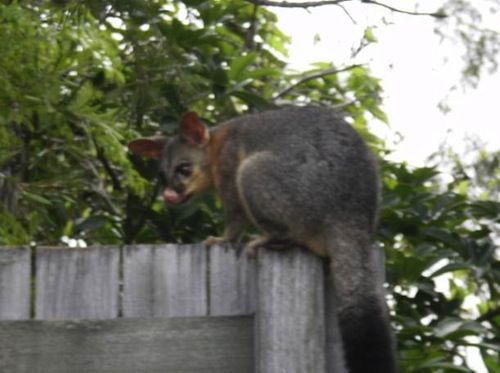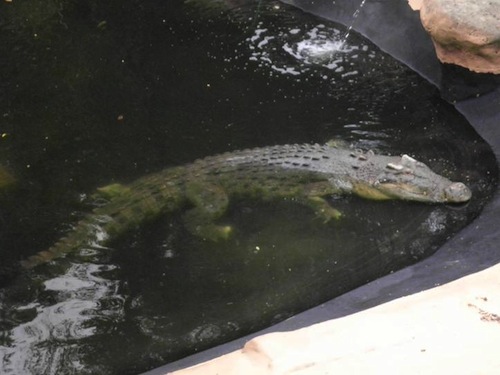G'day mates! As most of you probably didn't know, the 26th of January last week was the one and only Australia Day. So as a tribute to this special celebration I want to share something important to me, from my country. In my lifetime I've been blessed with seeing some wacky wildlife unique to the land down under. The animals I'm going to show you are only a few of the creatures we have here. Species of kangaroos, wallaby?s, possums, birds, insects, lizards and emus, platypus and koalas are some of the most famous native Australian animals. There are too many animals to be showcased in one article, so I'm going to make this a series.
I love animals very much and since these animals are unique to my country I want to take you, dear reader, on an Australian animal tour. I'll share with you some information on the creatures, pictures of these animals and share a few of my own personal stories and experiences. All the photos in this particular article were taken by me except the picture of the freshwater crocodile, which was taken by my mother. Some of the photos were taken at zoos or aquariums, some on holidays and some from the comfort of my own backyard. Enjoy!

This cheeky devil called the Kookaburra is famous for its call that sounds like a laugh and part in the song "Kookaburra Sits In The Old Gum Tree" I took this photo on Christmas day when I spotted this bird on a branch in our neighbor's tree. This is a beautiful side on shot of the bird showing its beak, head and feathers. It looks as if the kookaburra is staring out into the distance, pondering over something. Early in the morning my family will hear kookaburras laughing from the bush near our house. Sometimes we don't need an alarm clock, because the kookaburras laugh well before we want to wake up.
Kookaburras live in bushland and use their beaks (an attribute to being a member of the kingfisher family) to catch a variety of prey. They will eat lizards, insects, small reptiles, snakes, rodents, frogs and strangely enough, very seldom do they eat fish. The laughing kookaburra will live in the same place and mate for life. Breeding will take place between July-September and 1-4 eggs will be laid in the hollow of a tree. These birds are beautiful and are a pleasant surprise to find sitting on your fence or hear laughing in the morning.

This next picture is a photo I took of a Common Brush Tailed possum sitting on our neighbor's fence. My family found two of these cute creatures roaming around in our backyard. One was quite plump, and we suspected that it might have been pregnant and the other its mate.
Bushland is the preferred habitat as the possums make their homes in hollow limbs of trees although these possums are known to take refuge in human sheds and house rooves. It can be quite annoying to have possums make their homes in suburban areas because they make such a racket scratching around in your roof at night. Mostly, the possums eat eucalyptus leaves or other types of plants such as flowers, herbs, buds, grasses and fruit. Insects and small mammals (e.g. rats) are also on the menu.
Usually these possums only come together for breeding. Mating often occurs in spring and autumn (fall) months but births can take place at any time of the year. Common brush tailed possums are nocturnal animals meaning they're most active at night. They can make growling sounds when threatened, hisses and screeches.

There are two types of crocodiles; freshwater and saltwater. Both of these beauties are native to Queensland, Australia. The freshwater crocodile (shown in the photo above) is a lot smaller than the saltwater crocodile growing up to 3 meters or 10 feet for males and less than 2 meters or 7 feet for females.
Snakes, insects, frogs, turtles, water birds, fish and small mammals that come to drink at rivers are the unlucky prey that may find themselves caught in the jaws of a freshwater croc. Freshwater crocs do not attack people unless provoked, but it's still wise to stay well away if you find one in the wild. They can be found in inland freshwater areas and occasionally in rivers. They mate between July-August and lay up to a dozen eggs in a hole in a sandy riverbank.
Compared to saltwater crocodiles freshwater crocodiles also have a thinner snout and all teeth nearly equal in size. On the other hand the saltwater crocodile (shown in the photo below) is bigger, has a broader snout and a jawline uneven in size.

Male saltwater crocodiles can grow up to 7 meters or more (around 23 feet) and females up to 4 meters (around 13 feet). They can weigh over 1,000kg (a tonne). Crikey, that's big! Saltwater crocs are capable of eating much larger prey and are willing to eat nearly anything that dares to creep close enough to the edge of a waterhole. Wallabies, pigs, fish, birds and even other crocodiles are all gobbled down. These crocs have been known to take cattle, horses and other livestock that wander too close to the water's edge.
They move alarmingly fast and it can be extremely dangerous for people who swim or play near crocodile territory. Saltwater crocodile attacks on humans occur every year and people venturing to crocodile country are urged to be careful. Saltwater crocs can be found in rivers, lagoons, swamps, creeks and sometimes even close to beaches. They will mate between November-March and lay up to 500 eggs in a nest.
These creatures are all beautiful, unique and exotic animals native to Australia. Waking up to the sound of kookaburras laughing early in the morning is more cheerful than waking up to an alarm. I remember reading as a child a fabulous book called "Possum Magic" and watching the crocs being fed at the zoo. There are more native Australian animals I'm going to showcase next week.
Happy belated Australia Day!
- Zicker
Author's Note: If you would like to hear a kookaburra laughing go to this link:
http://www.youtube.com/watch?v=5-PHqqEkM1w
If you would like to listen to the song "Kookaburra Sits in the Old Gum Tree" go to this link:
http://www.youtube.com/watch?v=CxzH8x-FDH0
To find out more information about the animals go to the sources below:
Kookaburra: http://animals.nationalgeographic.com.au/animals/birds/laughing-kookaburra/
http://walkaboutpark.com.au/index.php?id=42
Common Brush Tailed Possum: http://www.australiazoo.com.au/our-animals/amazing-animals/mammals/?mammal=possums_and_gliders&animal=common_brushtail_possum\
http://parkweb.vic.gov.au/__data/assets/pdf_file/0018/322191/brushtailed-possum4.pdf
Crocodiles: http://www.divethereef.com/guides/AboutCrocs.asp
http://www.outback-australia-travel-secrets.com/australian_crocodiles.html#australian-freshwater-crocodile